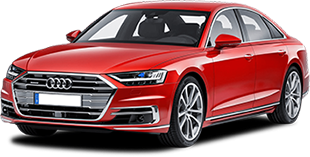ATVs & Accessories - Yamaha - 2001 Yamaha Banshee
Get your hands on the complete Aro factory workshop software
Download nowGet your hands on the Complete Aro Factory Workshop Software
Download nowGet notified when we add a new AroSpartana Manual
We cover 60 Aro vehicles, were you looking for one of these?

Skoda - Auto - skoda-karoq-2017-brukerhandbok-110449

Skoda - Auto - skoda-karoq-2017-110460

Skoda - Auto - skoda-karoq-2017-handleiding-110448

Skoda - Auto - skoda-karoq-2017-instruktionsbog-110435

Skoda - Auto - skoda-karoq-2017-110453

Skoda - Auto - skoda-karoq-2017-omistajan-kasikirja-110439

Skoda - Auto - skoda-karoq-2017-110444

Skoda - Auto - skoda-karoq-2017-kullan-m-k-lavuzu-110458

Skoda - Auto - skoda-karoq-2017-110457

Skoda - Auto - skoda-karoq-2017-navod-k-obsluze-110433

Skoda - Auto - skoda-karoq-2017-manualul-de-utilizare-110452

Skoda - Auto - skoda-karoq-2017-ipasnieka-rokasgramata-110447

Skoda - Auto - skoda-karoq-2017-agarmanual-110454

Skoda - Auto - skoda-karoq-2017-uzivatelska-prirucka-110455

Pool Equipment - Haywood-Pool - Super Pump~All Super Pump Models

Skoda - Auto - skoda-karoq-2017-110441

ARO - 10 - Owners Manual - 1980 - 2006

Skoda - Auto - skoda-karoq-2017-manuel-du-proprietaire-110440

Skoda - Auto - skoda-karoq-2017-prirocnik-za-lastnika-110456

Skoda - Auto - skoda-karoq-2017-savininko-vadovas-110446

Skoda - Auto - skoda-karoq-2017-manual-del-propietario-110438

Cars & Automotive Accessories - Kenwood - C929

Barossa - Motorcycle - Barossa__Barossa_PYTHON_100cc_parts_5d8a7f921c3648a62136367

Skoda - Auto - skoda-karoq-2017-manual-do-proprietario-110451

VCRs & Accessories - Hitachi Electronics - VTM171A

Cameras & Accessories - Nikon - Nikon COOLPIX S203

Power Tools & Accessories - STIHL - STIHL Trimmer FS 40, FS 50

Video Cameras, Camcorders, & Accessories - Canon - ZR900 Camcorder

Speaker Systems - JBL - Xtreme

Toys & Accessories - Lego - DUPLO Town - AROUND THE WORLD - 10805

Skoda - Auto - skoda-karoq-2017-instrukcja-obslugi-110450

Printers & Accessories - Epson - Stylus Pro 9000

Speakers & Audio Accessories - Dual - Dual - SX652 ~ SX692

ARO - 10 - Parts Catalogue - 1990 - 2006.PDF

Furniture & Storage - Blue Rhino - GAD1375SP

Skoda - Auto - skoda-karoq-2017-omaniku-kasiraamat-110436

Sewing Machine - Singer - 14T968DC %7C PROFESSIONAL 5

Printers & Accessories - Xerox - WorkCentre Pro C2128~C2636~C3545

Cars & Automotive Accessories - Ford - F-150 2001

Cars & Automotive Accessories - Kenwood - DPX-510

Skoda - Auto - skoda-karoq-2017-110431

Skoda - Auto - skoda-karoq-2017-vodic-za-korisnike-110442

Ducati - Motorcycle - Ducati_M620_ie_Parts_2002

Skoda - Auto - skoda-karoq-2017-owner-s-manual-110437

Grills & Accessories - Blue Rhino - Blue Rhino WAD996SP

Barossa - Motorcycle - Barossa_PYTHON_100cc_parts

1981-1995--Chrysler--Lebaron--4 Cylinders C 2.2L FI Turbo SOHC--31006701

Sewing Machine - Brother - Brother DB2-B798

Skoda - Auto - skoda-karoq-2017-110432

Skoda - Auto - skoda-karoq-2017-kezelesi-utmutato-110443

Skoda - Auto - skoda-karoq-2017-110459

Barossa - Motorcycle - Barossa__Barossa_PYTHON_100cc_parts

DJ Equipment - Kramer AV - VM-4HDT

1981-1995--Chrysler--Lebaron--4 Cylinders J 2.5L MFI Turbo SOHC--31034803

1981-1995--Chrysler--Lebaron--4 Cylinders J 2.5L MFI Turbo SOHC--31006702

1981-1995--Chrysler--Lebaron--4 Cylinders B 2.2L 2BL SOHC--31218101

1981-1995--Chrysler--Lebaron--4 Cylinders D 2.6L 2BL SOHC--31218102

Skoda - Auto - skoda-karoq-2017-manuale-del-proprietario-110445

Printers & Accessories - Epson - WorkForce 40

1981-1995--Chrysler--Lebaron--4 Cylinders D 2.2L TBI SOHC--31095601

Skoda - Auto - skoda-karoq-2017-brukerhandbok-110449

Skoda - Auto - skoda-karoq-2017-110460

Skoda - Auto - skoda-karoq-2017-handleiding-110448

Skoda - Auto - skoda-karoq-2017-instruktionsbog-110435

Skoda - Auto - skoda-karoq-2017-110453

Skoda - Auto - skoda-karoq-2017-omistajan-kasikirja-110439

Skoda - Auto - skoda-karoq-2017-110444

Skoda - Auto - skoda-karoq-2017-kullan-m-k-lavuzu-110458

Skoda - Auto - skoda-karoq-2017-110457








































































































































































































































